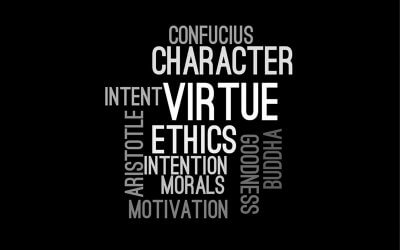Discover how understanding the limitations of averages and embracing probabilistic thinking can improve decision-making and risk management in business.

Boosting Common Sense Decision-Making in Your Organization
Improve Problem-Solving, Information Gathering, and Understanding Intent.
Introduction: The Need for Common Sense
Business leaders often question why employees or direct reports don’t use common sense in decision-making. To help people make better decisions, we must delve into three crucial areas: solving the right problem, gathering all the available information, and understanding the intent.
- Solving the Right Problem: The Art of Asking the Right Questions
To prevent solving the wrong problem, make sure to:
1.1 Define the problem yourself
- Don’t rely on someone else’s definition of the problem.
- Encourage team members to clarify their understanding of the issue.
1.2 Stay close to the problem
- Engage with those who have firsthand experience of the problem.
- Encourage open communication and feedback channels.
1.3 Think about the problem from multiple perspectives
- Foster a culture of collaboration and diverse thinking.
- Utilize brainstorming sessions and workshops to explore various angles.
- Having all the Available Information: Observing, Orienting, and Analyzing
To gather all available information, consider the following:
2.1 Move the decision-making to the information source
- Empower frontline employees to make decisions.
- Implement a decentralized decision-making structure.
2.2 Observe and orient using John Boyd’s OODA loop concept
2.2.1 Observe
- Continuously gather information to build a comprehensive picture.
- Encourage team members to ask questions to understand the issue better.
- Filter out the irrelevant “noise” to focus on critical data.
2.2.2 Orient
- Foster a culture of self-awareness and understanding of cognitive biases.
- Provide training and development opportunities to improve analytical skills.
- Encourage employees to develop mental models that help replace biases and assumptions.
- Knowing the “Intent”: Moving Beyond Rules to Foster a Purpose-Driven Culture
Rather than relying on specific rules, understanding the intent behind decisions promotes a broader understanding that helps employees make decisions aligned with the organization’s goals.
3.1 Establish clear organizational values and goals
- Communicate the company’s mission, vision, and values consistently.
- Develop a shared understanding of the organization’s strategic direction.
3.2 Promote a culture of trust and empowerment
- Encourage employees to take ownership of their decisions.
- Provide support and guidance while allowing for autonomy.
3.3 Develop guidelines and frameworks for decision-making
- Create decision-making frameworks that emphasize the organization’s intent and values.
- Offer tools and resources that help employees navigate complex decisions.
Conclusion: Achieving Organizational Clarity and Empowering Decision-Making
Ask yourself these questions to determine if your team is making common-sense decisions:
- Are they solving the right problem?
- Do they have all the available information?
- Do they know the intent, and is there organizational clarity?
If you find something missing in these areas, address it and empower your team to make better decisions. Embrace a culture of collaboration, open communication, and trust, and watch your organization’s decision-making processes improve.
Copyright (c) 2021, Marc A. Borrelli
Recent Posts
The “Flaw of Averages” Causes Havoc for Businesses
What is Your Strategy, In a Sentence?
If you are banking on the vaccine returning us all to “normal” quite quickly, in the famous words of Dr. Akande, “Hope is not a strategy.” Your organization should be preparing a well-defined strategy for 2021 and beyond. Once you have this strategy, the ultimate question: can you clearly articulate it in one sentence? Distilling your strategy into a single sentence is a powerful tool, both for your legacy and your team effectiveness. Not sure where to start? I offer a plug-in formula to set up your strategy sentence.
Character Matters
“It’s easier to hold to your principles 100% of the time than it is to hold to them 98% of the time.” — Clayton Christiansen. I have often written about the importance of a company’s Core Values. That’s because no matter what words you may have chosen as values, your organization’s Core Values are on display in how leadership and employees actually behave. As I’ve said before, how you have acted in the last twelve months will define your career for the next decade. Your character, and your company’s character, matters.
New Year’s Resolutions, Once More Unto the Breach
The holidays have been even quieter than normal, which has given me plenty of time to reflect on my New Year’s resolutions. Looking at 2021, I decided to use a completely new approach to lay out my goals. The result of my new approach? A highly-detailed, accountable, actually achievable plan for the next year (I think). Wondering what this process looks like?
To Vaccinate or Not to Vaccinate, that is the Question
What do your employees, peers, and leadership team think of the COVID-19 vaccine? Will you require the vaccine, or will you let employees make individual decisions? As a leader, you need to steer the discussion about vaccines in your organization with your Core Values in mind. No matter what strategy your organization takes, the most important factor is going to be how you communicate your decision.
3 Ways You Could be Undermining Your Core Values
Can you answer “Why does your organization exist? What are your core values?” Great. Now, would your latest entry-level employee give a similar answer? How about someone who has been at your company for a year? Your core values give your organization a guiding mission. Many organizations pay this idea lip service, but their true commitment to their core values was tested this year. As we close out 2020, there’s no better time to examine how your organization is approaching your core values.
Are You Prepared for 2021 With Enough Cash?
Companies don’t go bankrupt because they lose money; rather, they run out of cash. Where are we, heading into 2021? First, you can expect your cash to get tighter as we weather the current economic slowdown. Then, with a vaccine on the horizon, you will need to be positioned for growth. If you don’t have the cash you need, have you looked at how you can generate the cash internally? More on how to improve your cash conversion cycle…
Tony Hsieh, a Corporate Culture Icon, RIP
In his work as Zappos CEO and elsewhere, Tony Hsieh believed, and proved, that culture is the most important thing in an organization. According to Hsieh, if you get the culture right, the rest will take of itself. How did Zappos do it? You can take a look at everything from the company’s interview questions, to “The Offer” to leave a position as a new hire. Hsieh believed that a company’s brand is just a reflection of the culture, and his legacy is felt across so many industries.
CEO, Try Thy Hiring System
How does your company hire? I’ve seen the good, the bad, and the surprisingly ugly hiring processes in my career. From the HR email mix-ups to the interviewer watching the World Series while I responded to his questions, I’ve learned that you can tell a lot about an organization simply by examining the hiring experience. Are you chasing away the kind of people you need at your company?
What is Leadership?
What is it, exactly, that great leaders do? There are plenty of overused adages about “leadership” in business. It’s worth examining the tropes around leadership, plus the traits of the leaders who actually leave a mark. Great leaders are forged through adversity, and they leave a legacy. What does that look like in your organization?










